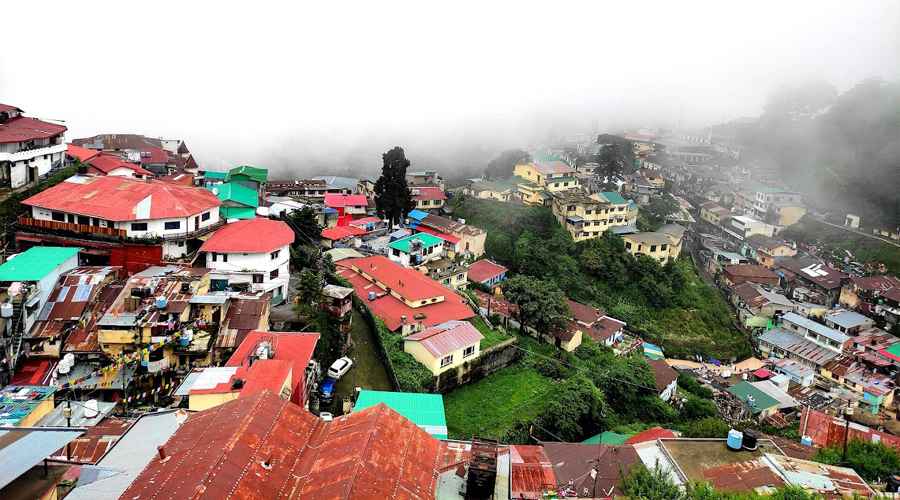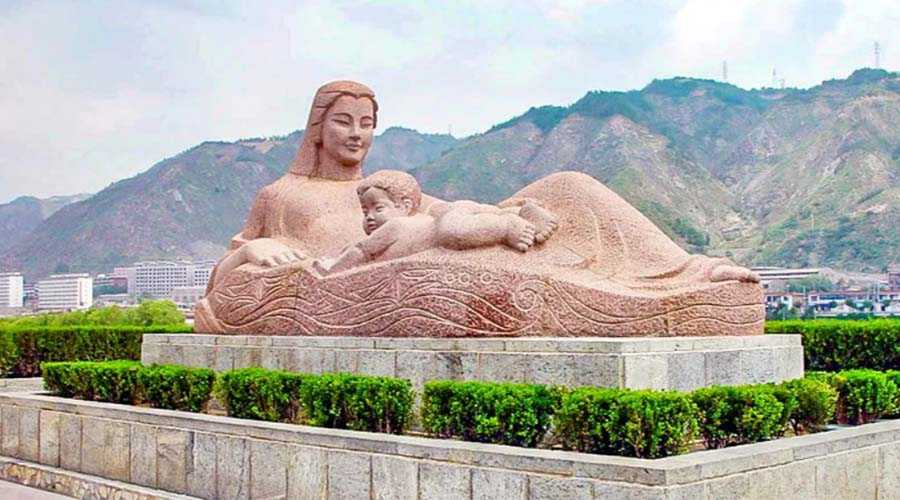Lal Tibba Scenic Point is one of the most iconic places in Mussoorie, Uttarakhand, offering unparalleled views of the majestic Himalayan ranges. As the highest point of the “Queen of Hills,” situated at an elevation of about 2,275 meters (7,164 feet) above sea level, Lal Tibba is a favorite among travelers seeking breathtaking panoramas, peace, and an authentic mountain experience. Unlike the bustling Mall Road, Lal Tibba is calm and serene, attracting those who wish to connect more deeply with nature.
Historical and Cultural Background
The name “Lal Tibba” translates to “Red Hill,” which is believed to have been inspired by the reddish glow of the sunrise and sunset reflecting off the hilltops. During colonial times, Lal Tibba and its surrounding area were used as a summer retreat by the British. It is also dotted with old colonial-style cottages, army cantonment zones, and broadcasting towers that add historical character to the place. The Indian Military uses the hill for communication purposes, and the place still has remnants of British-era colonial architecture.
This point was not always a major tourist attraction. Before the installation of telescopes in 1967, it was primarily a vantage spot for locals and soldiers. The name gained importance over time as explorers and travelers began frequenting it for its rare and clear Himalayan views.
Location and How to Reach
Lal Tibba is located in Landour, about 4-6 kilometers from Mall Road, Mussoorie. Landour itself is known as a quieter counterpart of the bustling Mussoorie town, filled with old-world charm, pine forests, and small cafés.
- By Road: From Mall Road, taxis and auto-rickshaws are easily available to reach Lal Tibba.
- On Foot: For those who enjoy walking, a scenic uphill trek of about 45 minutes along tree-lined roads also leads to the viewpoint.
The View from Lal Tibba
The major highlight of Lal Tibba is its panoramic view of the Himalayan stretch. Unlike many viewpoints where visibility is often obstructed, Lal Tibba’s vantage point, combined with its telescopes, allows tourists to see mountain peaks such as Badrinath, Kedarnath, Trishul, and Bandarpunch on clear days. The binoculars installed at the tower’s deck give visitors a closer look at these snow-covered ranges, making the experience unforgettable.
During sunrise and sunset, the skies are painted in shades of orange, pink, and gold, adding to the magic of the hill. It is also a popular spot for stargazing at night when the skies are clear.
Attractions and Activities at Lal Tibba
- Telescopes and Observation Deck: Installed in the mid-20th century, these binoculars provide magnified views of the Himalayan peaks and valleys. Today, tourists can stand on the observation deck, sip chai, and enjoy this rare sight.
- Charming Cafés: Small cafés around the scenic point serve everything from hot tea and Maggi to pancakes and coffee. The most famous is Lal Tibba Café, where eating a warm meal with snowy peaks in sight feels heavenly.
- Photography: Lal Tibba is a paradise for photographers. The landscape changes character throughout the day, giving countless opportunities for capturing postcard-worthy images.
- Colonial Cottages: Landour around Lal Tibba is home to rustic cottages, some of which date back to British times. Walking through the lanes lined with deodars and pines offers a glimpse into Mussoorie’s colonial heritage.
- Walking Trails: Short trails from Lal Tibba lead visitors through small hamlets, forests, and scenic bends, perfect for nature lovers and birdwatchers.
Best Time to Visit Lal Tibba Scenic Point
Lal Tibba is beautiful year-round, but the experience differs by season:
- Summer (March to June): Pleasant weather, excellent for sightseeing and clear skies.
- Monsoon (July to September): Misty views, lush greenery, and lower crowds, though clouds may obscure mountain ranges.
- Winter (October to February): Snow-capped peaks are visible in their full glory; temperatures drop sharply and snowfall often transforms the region into a winter wonderland.
Nearby Attractions
The areas around Lal Tibba are equally fascinating and can be explored easily within a day:
- Char Dukan Area: A cluster of four famous shops serving hearty breakfasts and snacks, popular among both locals and visitors.
- St. Paul’s Church: Built in the 19th century and reflecting beautiful colonial architecture, the church is one of the landmarks near Lal Tibba.
- Landour Bazaar: A quiet, charming market ideal for buying souvenirs, handcrafted items, and sampling local jams and bakery products.
- Kellogg’s Memorial Church: A Gothic-style structure that still preserves the charm of the past.
- Sisters’ Bazaar: Known for its quiet vibes and small bakeries, it is a great place to explore after visiting Lal Tibba.
Tips for Travelers
- Binoculars and telescopes at the observation deck may require a small fee, so keep cash handy.
- The early morning hours are best for mountain visibility as clouds often cover the peaks later in the day.
- Carry light woolens, even in summer, because the area is cooler than Mussoorie town.
- Try local snacks and coffee at cafés near the viewpoint to complement your experience.
- Respect the peace of Landour, which is a tranquil cantonment area, and avoid unnecessary noise.
Why Lal Tibba is Special
Among Mussoorie’s many attractions, Lal Tibba stands out because it allows visitors to experience unfiltered natural beauty. Unlike the more crowded Mall Road or Kempty Falls, Lal Tibba offers serene surroundings where one can sit, relax, and immerse in Himalayan grandeur. The breathtaking views of snow peaks combined with its subdued charm make it much more than a simple tourist spot—it’s an escape into nature, history, and tranquility.
For nature lovers, photographers, history buffs, and even casual travelers, Lal Tibba is an essential stop. It embodies the beauty of Mussoorie while revealing the less commercial side of the hill station. If Gun Hill is the pulse of Mussoorie’s tourist activity, Lal Tibba is its soulful heart—calm, timeless, and inspiring.
At 2,275 meters, the “Red Hill” continues to captivate generations of travelers, reminding us why Mussoorie is still celebrated as one of India’s most enchanting hill stations.

